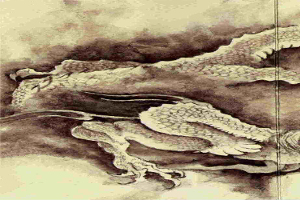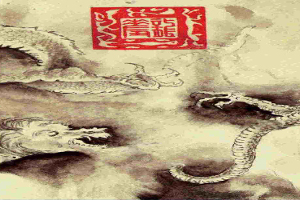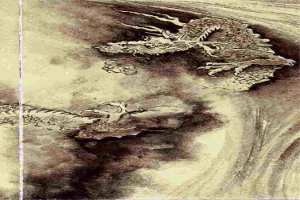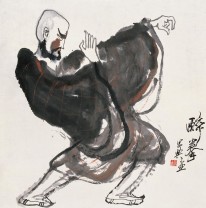 The Daoist Origins of Chinese Martial Arts in Tàijí Quán (太極拳) Manuals published in the West
The Daoist Origins of Chinese Martial Arts in Tàijí Quán (太極拳) Manuals published in the West
By: Dominic LaRochelle, Ph.D. Laval University, Quebec City.
In Chinese martial arts circles, differences of interpretation concerning the origins of the art of Tàijí Quán are not new. In fact, they are at the heart of a century-old debate that generally divides scholars and practitioners. Chinese myths and legends have been in great part adopted by Western practitioners. The aim of this article is to analyze how was construed in the second half of the 20th century a complex rhetoric trying to convince Western readers of Tàijí Quán books that their practice has an ancient Daoist origin.
Introduction
In Chinese martial arts circles, differences of interpretation concerning the origins of the art of Tàijí Quán are not new. In fact, they are at the heart of a century-old debate that generally divides scholars and practitioners along two lines. There are those who claim that Tàijí Quán originates from Chenjiagou, a village in province of Henan controlled by a military family called Chén. As early as the 17th century, it is believed that some members of this family invented (or at least practiced), probably under the influence of existing martial arts practiced in their area, such as the Shaolin techniques, a martial system that would later become known as the art of Tàijí Quán. Publications by scholars such as Tang Hao (1887-1959)[1], and more recently Douglas Wile[2] and Stanley Henning[3] support this particular point of view. Opponents of this view claim that Tàijí Quán originated in Daoist circles, more particularly in the Wudang Mountains of Hubei province. According to this interpretation, Tàijí Quán is fundamentally a Daoist spiritual practice; a perspective which proves particularly congenial to many practitioners of Tàijí Quán . Nevertheless, proponents of this genealogy also have research to back up their claims. Scholars such as Catherine Despeux[4], Charles Holcombe[5] or Livia Kohn[6] tend to defend this point of view.
In an article published in the Journal of Asian Martial Arts a few years ago,[7] Douglas Wile analyses the Chinese martial arts manuals of the late Qing dynasty and early Republican-era.[8] Wile maintains that the belief in the Daoist origins of Tàijí Quán as it is displayed in these manuals is the source of a rhetoric which emphasises the spiritual dimension of martial arts. He goes on to say, however, that there is little evidence to support the idea that Tàijí Quán might ever have originated in Daoist circles.[9] Wile’s interpretation demonstrates that most practitioners and scholars both in China and in the West nevertheless accept the notion that Tàijí Quán is first and foremost a spiritual practice with Daoist origins. Indeed, “the Daoist-taiji connection in China was painstakingly constructed, and fiercely contested, but presented to the West as a fait accompli”.[10] I concur with Wile’s statement that the rhetoric of the “Daoist origins” is still prevalent in the mind of many Western practitioners, as an examination of Tàijí Quán manuals published in the West since 1960 will amply demonstrate. The aim of this article is thus to analyse how was construed in the second half of the 20th century a complex rhetoric trying to convince Western readers of Tàijí Quán books that their practice has an ancient Daoist origin.
Tàijí Quán, and Tàijí Quán books published in the West
In Western popular circles, Tàijí Quán is often referred to as a “moving meditation” or a “slow gymnastic”. Indeed, the practice of Tàijí Quán is traditionally based on calisthenics that are practiced slowly and smoothly, usually involving a meditative dimension akin to the one found in Indian yoga for example. By focusing on breathing, practitioners come to feel the “energy” (qi)[11] flowing through their bodies, an energy that, following specific movements, provides a therapeutic effect on every organ of the body. Slow movements and muscle relaxation are needed to release “energy channels” (or meridians), and allow a free flow of qi throughout the body. But beyond the meditative and therapeutic aspects, diligent practitioners are usually aware that Tàijí Quán is also a fighting art. Each of the movements that comprise the sequences is designed to be used to counter a physical assault. Muscle and mind relaxation also train the practitioner to “listen” to the adversary, to feel and follow his or her aggressive energy, redirecting it against him. In a combat situation, the practitioner of Tàijí Quán is able to generate a great deal of power, with a minimum of muscular strength. According to one Tàijí Quán saying: “Four liang [ounces] deflect one thousand jin [pounds]. Clearly, it is not force (li) that conquers [an opponent]”.[12]
Tàijí Quán became known in Western countries at the beginning of the 1960’s. Although a few Chinese immigrants practiced and taught martial arts privately probably as early as the middle of the 19th century[13], Chinese martial arts were generally ignored by Westerners before WWII[14], with a few exceptions. As Stanley Henning reminds us, “The high point for the Chinese martial arts during the Nationalist era came in 1936, when a nine-member troupe performed at the Eleventh Olympiad in Berlin. This was the first time the group had demonstrated outside China, and the high acclaim it received provided some consolation for a lackluster showing by the Chinese Olympic team.”[15] However, it was not before the end of the 1950’s that Westerners were initiated to Chinese martial arts as practitioners. Tàijí Quán seems to be the first Chinese martial art to be taught freely and to a large scale to non-Chinese, first to an American audience, a few years later to Europeans. It was handed on mainly by Chinese and Western teachers, whose work was supported by a whole industry of popular books designed to promote and, to some extent, teach martial arts. These books were specifically intended to Western Tàijí Quán practitioners (or Tàijí Quán practitioners to be). In this context, I consider them to be a continuation of early 20th century martial arts manuals published in China.
To my knowledge, the martial arts manuals published in China were all “how-to” manuals which the newly-formed nationalist republic used to encourage its people to strengthen themselves in mind and body.[16] By contrast, post-war books published in Western countries do not all fit the category of “training manual”. Some of them are simply essays dedicated to the practice of Tàijí Quán which do not offer any technical teaching. That is why I prefer to use the word “books” to describe them instead of “manuals”. But, just like Chinese manuals, these books on Tàijí Quán aim at making Chinese martial arts known to a larger public.
Sophia Delza’s Tai Chi Ch’uan: Body and Mind in Harmony, an Ancient Chinese Way of Exercises to Achieve Health and Tranquility, seems to be the first book of this kind. Published in 1961 in the United States by the Good News Publishing Company, it also seems to be the first book on Chinese martial arts published in a Western language. Delza presents the teaching of the Wu family style of Tàijí Quán, which she learned from Ma Yueliang in the 1950’s. It was followed in 1963 by Edward Maisel’s Tai Chi for Health (Holt, Rinehart and Winston). Maisel presents the 108 form of the Yang family style of Tàijí Quán.
These books paved the way for a whole industry of popular books on Chinese martial arts published in Western countries. Indeed, some publishers specialise in the genre. American publishing houses such as Unique Publication, North Atlantic Books, Blue Snake Books, and YMAA Books have made Chinese martial arts known, and, to some extent, accessible to Westerners. On a much smaller scale, Chinese martial arts became known in the francophone world thanks to manuals published by authors such as José Carmona, Roland Habersetzer, Georges Charles and Catherine Despeux. Éditions Guy Trédaniel and Éditions Amphora published most of these French books.
A glance at Amazon.com’s online store shows the wide range of books on martial styles, schools, families and traditions now available to Western readers (not to mention instructional DVDs and fictional movies). And among the arts dealt with, Tàijí Quán invariably has pride of place with tens of new books published every year in English or French. I chose to analyse thirty or so of these Tàijí Quán books which I believed are representative of the genre. The most recent one of the corpus was published in 2006. I provide a complete list of this corpus at the end of the article. I tried to pick up the most inspiring excerpts to demonstrate my point here.
At first blush, when compared to the teaching of a master and the years of training that martial arts demand before achieving mastery, these books appear superficial and poor in content, having little to offer to the serious practitioner. Moreover, they all seem to say the same thing, to convey the same myths, and to repeat the same clichés about martial arts. However, while these books offer in my opinion little of use to the seasoned practitioner of martial arts, scholars who analyse them closely will recognise a wealth of information on Western perceptions of Chinese martial arts and their origins, which is necessary for anyone who wants to understand how Asian traditions—martial, religious or otherwise—were received in the West. Elsewhere, I explained how these books reflect perfectly Western expectations about spirituality, arguing that the “spirituality of Tàijí Quán” as presented by “Western books” has less to do with Chinese religious traditions then North American contemporary spirituality cloaked in Daoist imagery.[17]
A Martial Art with a Daoist Origin
In his JAMA article, Douglas Wile describes with great precision the Daoist rhetoric of the origins of Tàijí Quán found in China’s late Qing and early Republic martial arts manuals. Basically, this discursive strategy aims at proving that Tàijí Quán originated from ancient Daoist practices, have been invented or developed by a Daoist immortal, and/or have been developed in accordance with Daoist philosophy and cosmology.[18] Authors of post-war Tàijí Quán books published in Western countries have also employed this rhetoric using precisely the same discursive strategy. Essentially, this rhetoric proposes four different sources for Tàijí Quán: a technical origin, a philosophical origin, a mythical origin, and a historical origin. These origins are not mutually exclusive since all contribute to the overall goal of convincing readers that Tàijí Quán is a Daoist practice, even the historical origin. In the pages which follow, I will try to summarise this «strategy» using excerpts from Western Tàijí Quán books to illustrate various points.
The technical origins of Tàijí Quán
The rhetoric on the technical origins states that Tàijí Quán comes directly from ancient Daoist longevity practices. These practices, called neidan, daoyin or yangsheng in Chinese, consist mostly of a body of calisthenics, breathing exercises, energy leading practices (nowadays called qigong), special diet and meditation. In Daoist traditions, longevity practices are considered to be the first step on a spiritual path leading to immortality.[19] Early in 20th century China, Chinese Tàijí Quán practitioners linked these ancient traditions[20] to their own practice.[21] Authors of post-war Western books also used this idea to claim that Tàijí Quán has either been greatly influenced by Daoism, or directly originated from it, first as a path to immortality and then as a martial art. Indeed, for Tem Horwitz, “Disciplines like Tai Chi have their origins in the strain of Taoism with its interest in immortality, prolonging life, and promoting good health”.[22]
In his book Tai-Chi Chuan, La sagesse du corps selon le Tao, French author Charles Antoni also describes in great detail why Tàijí Quán should be considered a Daoist longevity practice, stating that in order to maintain long life, ancient Daoists created different disciplines that they applied to many activities of their lives. One of these disciplines was Tàijí Quán. [23] A few authors, like Yang Jwing-Ming, one of the most prolific authors to have published Chinese martial arts books in Western countries, propose to link Tàijí Quán, nei dan and spiritual enlightenment:
In Daoist Nei Dan (i.e., internal elixir) Qigong training, in order to reach the final enlightenment, there are four training procedures. […] To complete these four training procedures, you must know how to regulate your body, breathing, mind, Qi, and finally spirit. Moreover, you must also know to ripen the internal cultivation into external physical health and longevity. This kind of cultivation is called “double cultivation” (Shuang Xiu) and includes the cultivation of human nature as well as physical life.[…] Any Taijiquan practitioner must recognise, understand, and practice this double cultivation.[24]
Others, like José Carmona, claim that the breathing techniques of Tàijí Quán find its origins in the daoyin practices as it is shown in the 2nd century Illustration of the Daoyin (Daoyin tu) found on the Mawangdui archeological site.[25]
Longevity usually means good health. Accordingly, Daoist traditions have always maintained close relations with Chinese traditional medicine. They share two things that have shaped the way Tàijí Quán practitioners have seen their art, at least in modern times: first, a specific conception of the body, which makes it a microcosm modelled on a universal macrocosm;[26] second, the use of the notion of qi, or vital energy, present in all things, living or inanimate. Based on the idea that the practice of Tàijí Quán enables the universal qi to flow more freely in the body, this martial art literally becomes for practitioners a Daoist practice whose main attribute is therapeutic and, by extension, spiritual (assuming that health is a step on a spiritual path[27]).
Thus, it is not surprising that some modern authors link together the Nei jing, the medical treaty of the Yellow Emperor (compiled in the 3rd century B.C.), Daoist immortality practices, and Tàijí Quán:
At the very core of T’ai Chi is the goal of attaining Shen Ming (Illuminated Spirit) and the mobilising of ch’i (hsing ch’i), which are also at the core of Huang Ti’s teachings. Shen Ming is the very state of mind the sages claimed to have sought to achieve when compiling the I Ching […].
As with the later invention of T’ai Chi, the teachings of the Yellow Emperor are motivated by the arts of self-healing, longevity, and immortality.[28] Accordingly, Sophia Delza claims that the Nei jing proposes medical theories and concepts “with which our modern world agrees, and are the scientific basis of the physical structure of T’ai Chi Ch’üan.”[29]
Others prefer to establish direct correlation between Tàijí Quán and the “five animals frolics” (wuxingxi), supposedly elaborated by a 3rd century C.E. surgeon by the name of Hua To. According to Graham Horwood, this surgeon “had observed that certain creatures possess qualities that, if imitated, will enhance an individual’s health. Hua To also notice that certain animals naturally perform movements to stay alert, fit, and healthy for survival purposes, using their instinctual chi. […] All of [the movements and concepts of the wuxingxi] are incorporated in the Tai Chi form.”[30]
Tàijí Quán books published in the West in the second half of the 20th century are filled with these kinds of suppositions about longevity practices and traditional medicine; even if there is virtually no historical evidence linking Tàijí Quán with ancient Daoist practices, apart from some technical and metaphorical similarities. But to the authors of books on Tàijí Quán, it is clear that this martial art is a Daoist longevity practice that somehow became a martial art or at least a martial art that has been greatly influenced by these practices. What is undoubted is that by linking the practice of Tàijí Quán to longevity practices or traditional medicine, authors assert that Tàijí Quán is an ancient, millennial tradition, thus legitimating a practice that is said to found its origin in the roots of Chinese civilisation. Nevertheless, it is only one argument among others used to link Tàijí Quán to Daoism.
The philosophical origins of Tàijí Quán
The rhetoric on the philosophical origins states that Tàijí Quán and the ideas behind its movements and practice were elaborated in accordance with Chinese philosophical concepts drawn from Daoist philosophy. Philosophical concepts found in texts such as the Daodejing and the Zhuangzi, and cosmological concepts such as dao, wuji, taiji, yin and yang, wuxing and bagua are all used by practitioners to make sense of the practice of Tàijí Quán, to explain the way one executes the sequence of movements, or to describe the general mental state in which these same movements are to be executed. Like the authors of Chinese books, Western books argue that Tàijí Quán has its roots in ancient Chinese thinking, again supposedly at the core of Chinese civilisation. Accordingly, Tàijí Quán practitioners draw on three areas of Chinese philosophy. First, they draw the philosophical framework for Tàijí Quán from the Lao-Zhuang tradition[31]. Indeed, for many authors, Lao Tzu is very much the spiritual foundation of Tai Chi, guiding us to the way in which Tai Chi should be practiced, and offering insights into the physical aspects as well. Stressed are those principles which lead to suppleness, endurance, softness, centredness, and longevity. Thus, the images of the bow which bends without breaking, the baby who is soft and durable, water which yields, flows continuously, and overcomes the hardest opponent, plants which are soft and tender, and the Sage who works without doing and knows what is “enough”. For those who follow the “Way” of Tai Chi there is a growing ease and softness in movement, and finally the development of real and enduring strength.[32]
Tem Horwitz summarizes here most of the metaphors that one can read in the Daodejing and which modern practitioners claim to be closely related to the practice of Tàijí Quán.
Second, practitioners draw on Chinese cosmology to explain the structure and function of the various movements of Tàijí Quán. Using such concepts found in the classical Book of Transformations (Yi jing) as wuji (ultimate void), taiji (supreme ultimate), yin and yang, wuxing (five phases) and bagua (eight diagrams), they can explain, for example, the structure of the thirteen basic postures of Tàijí Quán:
The Book of Changes [Yi jing] contains “thirteen” classic postulates at its core, comprised of the Pa Qua (the eight trigrams) and the five elements, known as the Wu Hsing. Tai Chi Chuan retained these precepts, which evolved into the “Thirteen Postures”. Called “postures”, they are basically archetypal conditions representing the essence of each trigram, acted out in time and space by one or more of the physical gestures which make up Tai Chi. Thus, each move relates to a proportional quantity of yin or yang energy, determined by the “binary code” of the trigram it represents. The direction of each action, figurative or actual, relates to the Wu Hsing, the five states of change derived from the Ho Tu Map, which is in turn the mythical inspiration for the Book Changes.[33]
Thus the cosmological concepts that are used by Daoists to make sense of their Universe are transposed by modern Tàijí Quán practitioners to make sense of their martial arts moves. In the same manner, the philosophical concepts of the Lao-Zhuang tradition used to make sense of human behaviour in general is apply specifically to the practice of Tàijí Quán. But neither Laozi nor Zhuangzi or the Yijing specifically talk about martial arts, at least not in the modern sense given to these practices. In the same manner, Chinese cosmology generally encompasses all aspects of Chinese life, from birth to death and beyond. It is thus not surprising that martial arts practitioners rely on those concepts to make sense of their practice.[34] However, it does not make automatically Tàijí Quán a Daoist practice.
Third, Tàijí Quán practitioners draw from the concept of wuwei (usually associated with Laozi’s or Zhuangzi’s teachings) a Daoist morality or ethics, or simply a state of mind associated with the practice of Tàijí Quán. Literally, wuwei mean non-action, or non-doing. In Laozi’s philosophy, it is generally associated with a way of living in harmony with nature, while liberating oneself from egocentric concerns, passions and personal desires. On a social level, it means harmonising interpersonal relations with the natural flow of life, thus avoiding conflict. On a political level, it means that the head of the state will restrain from interfering forcefully in the lives of his subjects.[35] Martial arts practitioners (especially those adept in Tàijí Quán) have associated this concept with the idea of “yielding” that is applied both to solo performance and combat situations.
In regard to the practice of T’ai Chi, the most influential concept of the Tao Te Ching is Wei Wu Wei – Active Non-contention or Nonaggressive Activity. As we can surmise from its principles, T’ai Chi is completely based on this idea: yielding as a means of overcoming the unyielding, learning to lose as a means of winning without aggressive intents, using intrinsic (chin) rather than external muscular force (li), and abiding by the tan-t’ien rather than by the reactions of the mind. The entire concept of Wei Wu Wei in relation to T’ai Chi can be summed up in the following two statements [from Laozi]: “There is nothing in the world more soft and yielding than water, yet it overcomes the most hard and unyielding”, and “The Tao proceeds with natural movements”. Such statements have greatly influenced the principles and practices of T’ai Chi.[36]
According to authors, this Daoist morality or ethics is important in the practice of push-hands[37], in a combat situation, as well as in every situations of everyday life when one is “confronted” to another person. Cheng Man-Ch’ing, the famous Tàijí Quán master who taught in the United States in the 1960’s and 1970’s, talked about “investment in loss” when it comes to the concept of yielding in push-hands practice or free sparring. Although he finds this concept in Confucian philosophy, he also sees similarities with Daoist and Buddhist principles:
The Taoists advocate wu wei and the Buddhists venerate the doctrine of emptying. He who is dedicated to non-action seeks to realize the great hope of immortality. He who endeavors to empty the world of objectivity does so to cultivate his spirit which is his only real self. Similarly, I would adopt as my watchword for T’ai-chi Ch’uan the simple phrase, “investment in loss” – for a devotee voluntarily and at his own initiative to suffer “loss” will gain for him the benefit of health. To be more explicit, he who invests in small losses makes small gains, and he who invests in bigger losses makes bigger gains.[38]
For Cheng, “investing in loss” means to yield to the brute force of an adversary (or simply someone confronting the practitioner in a social situation, i.e. bullying, harassing, etc.) to “disintegrate”, or disengage the opponent’s violence by not applying a direct violent response against it. As such, the concept of wuwei serves to establish an ethic of nonviolence in Tàijí Quán . Many authors insist on this so-called non-violence, which is usually opposed to the approach of other martial arts, presented as aggressive and generating only more violence.
The mythical origins of Tàijí Quán
The rhetoric on the mythical origins states that Tàijí Quán was created by an immortal Daoist by the name of Zhang Sanfeng. Accordingly, contemporary Western practitioners convey the same myths and legends found in many early 20th century Chinese manuals. These legends claim that Zhang Sanfeng is the founder of the “internal school of martial arts” (neijia quan) and the creator of Tàijí Quán (other versions simply state that Tàijí Quán later evolved from the techniques of the internal school founded by Zhang).
By the Sung Dynasty (after CE 1000), the concept of “inner-intrinsic” school (Nei Chia) was firmly established. This system emphasised “soft” movement as being the best technique for loosening the joints, circulating blood, and building up a reserve of energy, with the philosophy that the mind must be in control of action, and that through this method, since “man was capable of wonders”, he could fulfil himself as a superior, a “realised” human being. Of the many philosophers engaged in the pursuit of such fulfilment, and who consistently practiced various Ch’üan, was Chang San-Feng, who was over ninety when he died. He was sixty-seven years old, when, after thirty five years of study, he settled down at the Wudang Monastery for nine years. During this time he created his version of Ch’üan, and his “way” was completed. […] Thus we are told, the concept of T’ai Chi Ch’üan dates from Chang San-Feng’s time.[39]
Stories of Zhang’s life are diverse in Western books, but usually reiterate the same elements as in Chinese manuals. Most authors place him in the setting of the Wudang mountains where he creates Tàijí Quán (or a martial art that will become later Tàijí Quán) after witnessing a fight between a snake and a bird of some sort, usually a crane. Depending on the version, the advantage is given either to the snake, which eludes the bird’s attack thanks to its flexibility, or to the bird which fends off the lightning attacks of the snake by moving its wings in wide circles; or to neither of them, each being able to avoid the other’s attack. From this scene, and based on Daoist and Buddhist studies, Zhang would have imagined a combat system which emphasised yielding and softness of movement:
Some historians trace tai chi’s origins to a man who watched a fight between a serpent and a crane. The crane attacked the serpent repeatedly with stabs of its beak, but the snake, by shifting its body at the right moment, never allowed the crane to touch him. The interested viewer of this battle came up with the idea of a method of dealing with an attack that uses flexible maneuvers, correct timing, and sensitivity to avoid the opponent’s offensive moves.[40]
Beyond a story about the origins of Tàijí Quán, I believe the Zhang Sanfeng legend suggests a discursive opposition between two separate martial arts traditions, the Wudang tradition and the Shaolin tradition of martial arts. This discursive opposition has come down to us, albeit with some modification, from an epitaph which Ming dynasty political philosopher Huang Zongxi wrote in honour of a famous martial artist in 1669 and where he states that exists in China two great schools of martial arts: Shaolin and Wudang.[41]
Indeed, one cannot fully understand the Zhang Sanfeng legend about the creation of Tàijí Quán unless one juxtaposes it with the Bodhidharma myth of the creation of the Shaolin School of martial arts. Although it would seem that these two accounts relate to two completely different (even opposite) traditions of martial arts, the structure of their respective myths of origin, as well as their historical construction, are fundamentally related. The two characters (Zhang Sanfeng and Bodhidharma) are both semi-mythical characters whose historicity cannot be confirmed. Bodhidharma is said to have live in the 6th century C.E., while Zhang is said to have lived centuries later, somewhere between the 13th and the 15th centuries. Likewise, the two characters are relatively important figures of religious traditions outside of martial arts circles, i.e., in Chan Buddhism and in Daoism. Bodhidharma and Zhang Sanfeng are also both associated with a sacred place in China, the Buddhist Shaolin Monastery and the Daoist Mount Wudang. Finally, both characters are considered to be the founder of a martial arts tradition.[42]
In light of this comparison, a full picture of the meaning of these characters emerges only when they are considered together. The legend of the creation of Tàijí Quán is really understandable only when set against the legend of the creation of the Shaolin School of martial arts. Thus, the real significance of Zhang Sanfeng and Bodhidharma has to do with their opposition to one another. Bernard Faure, quoting Turner, has this to say about Chan hagiographic characters, which I believe can apply to the present case:
They constitute together what Terence Turner calls a single “narrative actor”. According to Turner, “an ‘actor’ may become polarized into two contrasting figures, sharing one attribute but opposed upon one or two others.” The hagiographical text forms a whole, and the literary device used by the author clearly affects the biography of each character.[43]
I believed this is clearly what happened to the Zhang Sanfeng legend. It has been construed in opposition with another martial arts myth from another tradition. In this case, there is only one “narrative actor”, the Chinese martial arts, which origins was explained, starting at the end of the 19th century, by polarising two traditions allegedly created by two contrasting mythical (and spiritual!) figures. This opposition was then firmly established in early 20th century Chinese manuals and officialised within the many Chinese martial arts schools and associations that have flourished at that time. It is still used today to categorise the numerous Chinese martial arts, distinguishing between an internal and an external style.
But martial arts historians generally agree that this distinction is quite artificial and does not concur with historical or even technical analysis. Of course, most Western contemporary authors are not aware of the Huang Zongxi source. They simply repeat what they have learned from their teacher or what they have read in other manuals, ignoring all the while the source of the information and the controversy surrounding this interpretation which calls the reliability of the information into question.[44]
Even considering the arguments presented by authors of Tàijí Quán books (Chinese or Western), it is all but impossible to find conclusive historical evidence which proves that Tàijí Quán comes directly from Daoism, whether from a technical, a philosophical or a mythical point of view. The so-called proof adduced by authors of martial arts manuals (and even by some scholars) usually consists of vague analogies and technical connexions that do not pass the test of scientific analysis. As we will see next, even the historical origins of Tàijí Quán are not totally reliable and also take part to the strategy aiming at making Tàijí Quán a Daoist spiritual practice.
The historical origins of Tàijí Quán
Contrary to the technical, the philosophical and the mythical origins, the rhetoric of historical origins brings real-life Chinese Tàijí Quán practitioners into play, who are often presented as the real creators of Tàijí Quán . According to this rhetoric, Tàijí Quán was popularized—if not straight out created—as early as the 17th entury, in martial arts family circles such as the Chens, the Yangs, the Wus, etc. Victor Montekio is clear on this subject when referring to Tàijí Quán as the yin-yang martial art. He states that the earliest evidence of this school can be traced back to the Chen family, which one of the members, Chen Wangting (1600-1680), created the style in 17th century. Years later, another member, Chen Changxing (1771-1853), helped disseminated it outside the Chen village.[45]
Western manuals of Tàijí Quán are usually filled with stories of how Chinese masters of Tàijí Quán from the 18th and 19th centuries learned their art and established their own family lineage. These stories usually recount their apprenticeship as a martial artist and the feats they accomplished once they had mastered the art. The function of these modern stories of the masters is two-fold; first, they fill an historical void between ancient myths and practices (which are conveyed by the technical, the philosophical and the mythical rhetoric, but provide no clear historical evidence of a link between Daoism and Tàijí Quán) and contemporary practitioners. Accordingly, some authors present an elaborated lineage linking the Daoist immortal Zhang Sanfeng to the Chen family:
During his years of roaming, Chang San-feng’s disciple, Wang Tsung, reportedly taught Chen Tung-Chou, who taught Chang Sung-hsi (from Haiyen of Chekiang province) during the mid-1500s. Chang then taught Yeh Chi-ma, who taught Wang Chung-yueh, a native of Tai Hang Mountains in Shansi province. Wang then taught Chiang Fa, a native of Hubei province, who then taught Chen Wang-ting of the Chen family, native of Honen province. Assuming Chang San-feng as the founder, this is the most logical lineage leading up to Chen Wang-ting –although other traditions differ.[46]
So these stories serve first and foremost to create and establish a firm genealogy supposedly anchored in history. In this case the rhetoric often introduce new characters (such as Wang Zongyue) to create an uninterrupted line of teaching. However, the historicity of these characters is usually doubtful and serves only to fill the blanks in the lineage.
Second, these stories provide the setting for a fundamental and somewhat controversial notion in martial arts: the qi, or vital energy. Perhaps more than any other martial arts, Tàijí Quán is a practice based on energy-training. By practicing Tàijí Quán, it is said that the adept can develop, control and use this vital energy, either to heal himself or to hurt an opponent. Western manuals are often filled with stories of Tàijí Quán masters using qi to accomplished phenomenal feats that often defy the laws of physics. As Arieh Lev Breslow states, Ch’i provided an explanation of the tremendous power generated by T’ai Chi masters, despite the fact that T’ai Chi differed from the other martial arts by virtue of its slow, soft movements. The idea was that, with the breathing techniques and the Ch’i traveling up the spine, one tapped of the energy of the entire universe, which could be directed through the arms, hands, and fingers. Thus, T’ai Chi derives its power not from purely martial arts techniques, or from mere physical abilities, but most importantly from the primordial Ch’i of the universe. This is the way in which devotees of T’ai Chi traditionally viewed and explained the excellency of their art.[47]
So although modern legends bring historical martial arts practitioners into play, these stories of Tàijí Quán masters are mostly just that: legends. They present real-life martial arts masters who are invariably enveloped in a mystic halo of mystery whenever it comes to explaining how they acquire supernatural qi-powers, superior moral behaviour or a superior mastery of the martial arts. That being said, they nevertheless build up a semi-historical lineage; a genealogy that links contemporary practitioners to Daoist traditions through characters such as Zhang Sanfeng, through ancient longevity practices and through cosmological principles. It is less a question of historical analysis here than an exercise in folklore and legitimation. Contemporary practitioners legitimate their art because they are able to incorporate themselves into a lineage of martial artists going back to ancient Daoist practitioners.
Some scholars, such as Thomas A. Green, see a particular literary genre in these martial stories which objective is “invariably […] to bring honor to the system and its founders. Either as individuals or as members of an esoteric tradition, people within this system were capable of extraordinary accomplishments, and therefore, modern lineage holders profit from the halo effect”.[48]
Conclusion
The rhetoric of the origins of Tàijí Quán found in books published in Western countries from 1960 on serves essentially the same basic objective than their early 20th century Chinese counterparts: to bring the practice of Tàijí Quán into proximity with Chinese Daoist traditions. The analysis of Tàijí Quán books published in the West shows that by the time this martial art traveled to European and American countries and became widely practiced, the idea that it is indeed a Daoist practice was firmly implanted in the mind of Western adepts. In that context, it is not surprising that we find basically the same rhetoric about the origins of Tàijí Quán both in early 20th century Chinese manuals analysed by Douglas Wile and in post-war books published in the West.
The difference lies in the interpretation that each culture, in their respective time, made of the practice of Tàijí Quán. The nationalist newly formed Republic of China wanted to use Tàijí Quán to bolster patriotic pride and strengthened the nation using ancient longevity practices. Daoist traditions, coupled with intensive physical education (inspired by Western physical education) was supposed to help get rid of the image of “sick men of Asia” (dong ya bing fu) which had dogged the Chinese for many decades previous. They believed that martial arts could achieve that end. Contemporary Westerners tend to see Tàijí Quán as a Daoist spiritual practice that meets their own expectations about spirituality and help them achieve self-enlightenment. As John J. Clarke states, the practice of Tàijí Quán might become, for many Westerners, a form of spirituality closely related to the concept of “holism”.
Such a concept, which suggests a more harmonious way of living, points to a quasi-religious dimension in the Western attitude to Chinese callisthenic practices. This is not to suggest that Tàijí Quán has become a substitute for religion, or that its practice is incompatible with orthodox creeds in the West. Nevertheless, its integration of mind and body, along with its emphasis on mental concentration and its meditational quality, are designed to produce a sense of inner harmony and well-being along with a heightened state of consciousness, both of which have traditionally been associated with religious experience and have been seen as at least the accompaniments, if not the goals, of the religious quest. From this point of view, Chinese callisthenics might be seen as part of a tendency, albeit a minority one, toward a religiosity without gods or beliefs, a cultivation of a sense of well-being and self-transcendence that implies no credal commitment or institutional identification, and which sees no clear break between the cultivation of physical and spiritual excellence.[49]
The fact that no real scientific or historical evidence can be found to affirm that Chinese martial arts (or Tàijí Quán in particular) might have their origins in Daoist traditions is somehow beyond the point of my argumentation. It is not history that is at play here, but legitimation. It is undeniable that Daoist practices, Daoist thinking and Daoist worldview have influenced one way or another, the development of Tàijí Quán, at least in modern times. We could say the same about many others traditions, practices, customs or areas of Chinese daily life (or at least pre-modern daily life). After all, Daoism is one of the major intellectual currents of Chinese civilisation. My point is that the construction of Tàijí Quán as a Daoist spiritual practice is a modern invention that must be understand in a specific historical context: the emergence of Chinese modernity, on the one hand, and the development of Western contemporary spirituality on the other hand.
Tàijí Quán practitioners, whether Chinese or Western, adopted this “spiritual” point of view because it somehow justify and legitimate their practice within their own respective cultural horizon. These practitioners did not adopt Tàijí Quán because it is a spiritual practice whose origins can be found in Daoist traditions. That is what the rhetoric says, but in fact, I believe it is always the opposite that happens; practitioners made Tàijí Quán a spiritual practice by drawing from Daoist traditions the elements that meet their own expectations about what this martial art should be.
Let me be clear here; in my mind, that does not diminish the value or the interest of the martial art at all. On the contrary, it only shows the cultural depth of Tàijí Quán. I do not have any problem with people claiming that they practice Tàijí Quán as a Daoist practice or spirituality. Indeed, it has become for many people in China or in Western countries part of a spiritual path involving Daoist concepts. I am only stating that this claim is culturally and historically construed and is not a universal truth. Other people simply rejects this interpretation and maintains that martial arts are simply a way to learn to defend oneself and his or her family, or to stay healthy, or to simply pass a good time and socialize. All in all, it just shows that the practice of any martial art is not ahistorical and that it evolves constantly following the expectations of the practitioners.
Authors Biography: Dominic LaRochelle is a lecturer at the Faculty of Theology and Religious Studies of Laval University, Quebec City, Canada. His research focuses on the history of Chinese martial arts, their reception in Western societies, and their relation with religious traditions. He has been a practitioner of Chinese martial arts (wing chun, Tàijí Quán , bagua zhang and xingyi quan) for more than 15 years.
First published in: Journal of Chinese Martial Arts
NOTE: the article was so badly formatted in the original posting that I have taken the liberty of editing and reformatting it so it makes sense and doesn’t include the repetitions of text. As I have put a fair amount of work into this I feel it is within the bounds of fair use to post the article and I have included attributions where appropriate. Also it is one of the best articles I have found on the subject so worth reposting here I feel. If you are the author or feel you have a claim to the copyright to the article please get in touch and lets have a chat.
Bibliography
[2] Lost T’ai-chi Classics from the Late Ch’ing Dynasty (New York and Albany: State University of New York Press, 1996); T’ai Chi’s Ancestors. The Making of an Internal Martial Art (New York: Sweet Ch’i Press, 1999).
[3] “The Chinese Martial Arts in Historical Perspective”, Military Affairs (December 1981): 173-178; “Ignorance, Legend and Taijiquan”, Journal of the Chen Style Taijiquan Research Association of Hawaii 2, no. 3 (1994): [N/A]; “Chinese Boxing. The Internal Versus External Schools in the Light of History and Theory”, Journal of Asian Martial Arts 6, no. 3(1997): 10-19; “Academia Encounters the Chinese Martial Arts”, China Review International 6, no. 2(1999): 319-332.
[4] Tàijí Quán , art martial, technique de longue vie (Paris : Guy Trédaniel/Éditions de la Maisnie, 1981).
[5] “Theater of Combat: A Critical Look at the Chinese Martial Arts”, Historian 52, no. 3 (1990): 411-431; “The Daoist Origins of Chinese Martial Arts”, Journal of Asian Martial Arts 2, no. 1(1993): 10-25.
[6] Daoism and Chinese Culture (Cambridge: Three Pines Press, 2001).
[7] Douglas Wile, “Tàijí Quán and Daoism. From Religion to Martial Art and Martial Art to Religion”, Journal of Asian Martial Arts 16, no. 4 (2007): 8-45.
[8] The “Golden Era” of Chinese martial arts manuals goes from 1912 until 1937.
[9] Wile, “Tàijí Quán and Daoism”, 12, 16.
[10] Wile, “Tàijí Quán and Daoism”, 37.
[11] Westerners (at least English and French speaking people) often take the easy way and translate the Chinese word qi by ” energy “, a term that does not adequately render the complexity and subtlety of the Chinese word in its original cultural context. When it comes to human beings, qi is usually better translated as “breath”. In its cosmological context, it might be better viewed as “life force”, but it still remains a term that defy translation unless one forget all the cultural background this concept drags with it. For the sake of simplicity, I choose the easy way and keep the word “energy”, as most popular authors keep using it.
[12] Barbara Davis, The Taijiquan Classics. An Annotated Translation. Including a Commentary by Chen Weiming (Berkeley: North Atlantic Books, 2004), 113.
[13] Joseph Svinth identified a few cases of Chinese immigrants teaching martial arts in the United States and in Canada, i.e. in 1864, 1922, 1930, 1940 and 1941. However, it seems that all these cases concern Chinese people teaching exclusively to Chinese. Svinth, Kronos: A Chronological History of the Martial Arts and Combative Sports, http://ejmas.com/kronos/NewHist1900-1939.htm, consulted in May 2012.
[14] Contrary to Japanese martial arts that were introduced to American practitioners as early as the end of the 19th century. Svinth, Kronos, consulted in May 2012.
[15] Stanley Henning, “The Martial Arts in Chinese Physical Culture, 1865-1965″, in Green and Svinth, ed. Martial Arts in the Modern World (Westport, Praeger Publishers, 2003), 27.
[16] With respect to this question, the books written by Brian Kennedy and Elizabeth Guo, Chinese Martial Arts Training Manual. A Historical Survey (Berkeley: North Atlantic Books, 2005); Jingwu. The School that Transformed Kung Fu (Berkeley: Blue Snakes Books, 2010), on Chinese martial arts manuals and the history of the Jingwu Association are highly instructive. Also, Andrew D. Morris devoted an entire chapter of his study on the history of sports in Republican China to the modernization of Chinese martial arts at the turn of the 20th century: Marrow of the Nation. A History of Sport and Physical Culture in Republican China (Berkeley: University of California Press, 2004).
[17] Dominic LaRochelle, “Making the New Appear Old: The Daoist Spirituality of Chinese Martial Arts in Tàijí Quán Manuals Published in North America”. To be published.
[18] Wile, “Tàijí Quán and Daoism”, 10-11.
[19] Kohn, Daoism and Chinese Culture, 6; Isabelle Robinet, “Original Contribution of Neidan to Taoism and Chinese Thought” in Kohn, Livia, ed. Taoist Meditation and Longevity Techniques (Michigan: Center for Chinese Studies, University of Michigan, 1989), 317-321.
[20] Indication of longevity practices can be found in 2nd century B.C. documents such as the Mawangdui Daoyin tu, or even earlier philosophical texts such as the Daodejing and the Zhuangzi. However, these documents do not talk specifically about martial arts.
[21] Wile, “Tàijí Quán and Daoism”, 22-26.
[22] Tem Horwitz, Tai Chi Ch’uan. The Technique of Power (U.S.A.: Cloud Hands, 2003), 247.
[23] “Pour cette recherche du maintien de la vie, les anciens créèrent diverses disciplines s’appliquant aux différentes activités de la vie. […] Ils élaborèrent donc des techniques alimentaires, sexuelles, respiratoires, gymnastiques, des techniques de massages (sortes de mouvements de manipulation qui permettent, par des contractions et des pressions sur les point précis du corps, d’ouvrir le passage à cette force appelée Chi afin de lui permettre une libre circulation dans le corps tout entier), et, enfin cette danse de la vie qu’est le Tai-Chi.” Charles Anthony, Tai-Chi-Chuan ou la sagesse du corps selon le Tao (Paris : Épi s.a, 1977), 11.
[24] Yang Jwing-Ming, Taijiquan Theory of Dr. Yang, Jwing-Ming. The Root of Taijiquan (Boston , YMAA Publication Center, 2003), 40.
[25] Josée Carmona, Le Tàijí Quán des origines. L’enseignement de maître Wang Bo de Shanghai, coll. Les maîtres de l’énergie (Paris, Guy Trédaniel, 1995), 72-73.
[26] Kristopher Shipper, The Taoist Body (Berkeley: University of California Press, 1993 [1982]), 100.
[27] In Western contemporary spirituality, health (physical, psychological, but also emotional) is often a synonym of spiritual enlightenment. It is an incarnate spirituality, in which the body becomes a temple, a place where the practitioner can live out his or her spirituality. In this context, for many people, good health becomes not only a concrete and palpable sign that the spirituality is effective, but also literally a form of salvation. See LaRochelle”Making the New Appear Old: The Daoist Spirituality of Chinese Martial Arts in Tàijí Quán Manuals Published in North America”. To be published; LaRochelle, ” Recomposition de l’univers philosophico-religieux chez les jeunes adultes pratiquants d’arts martiaux chinois au Québec. Vers une vision holistique du religieux-vécu “, In Jean-Philippe Perreault et François Gauthier, dir. Regard sur… Jeunes et religion au Québec. Coll. Regards sur la jeunesse du monde. (Observatoire Jeunes et Société, INRS-UCS. Québec, Presses de l’Université Laval), 87-100.
[28] Stuart Alve Olson, T’ai Chi According to the I Ching. Embodying the Principles of the Book of Change (Rochester: Inner Tradition, 2001), 29.
[29] Sophia Delza, T’ai Chi Ch’uan. Body and Mind in Harmony. An Ancient Chinese Way of Exercise to Achieve Health and Tranquility (North Canton, Good News, 1961), 180.
[30] Graham Horwood, Tai Chi Chuan. The Code of life. Revealing the Deeper Mysteries of China’s Ancient Art for Health and Harmony (St-Paul, Dragon Door Publications, 2002), 19.
[31] This philosophical tradition is comprised both of Laozi’s Daodejing and Zhuangzi’s text.
[32] Horwitz, Tai Chi Ch’uan, 81.
[33] Graham Horwood, Tai Chi Chuan. The Code of life, ix.
[34] Indeed a whole collection of books that has appeared on bookshelves in the last 40 years shows that these philosophical concepts can be applied to multiple areas of typical modern American life when loosely interpreted. That why one can find today in almost every bookstore titles such as The Tao of Golf, The Tao of Baseball, The Tao of Love, The Tao of Interpersonal Relationships, The Tao of Business, etc. A study of these books shows that their contents usually highlight a poor knowledge of the authors about Daoism and Chinese religious traditions in general, and present concepts that are closer to Western than Chinese spirituality.
[35] Kohn, Daoism and Chinese Culture, 21-22.
[36] Olson, T’ai Chi According to the I Ching, 31.
[37] ”Push-hands” (tui shou) is the basic two-person practice of Tàijí Quán learned subsequent to individual practice of the basic sequence of movements. In this exercise, the two partners execute movements with their arms stuck to one another, without any muscular force, or one trying to dominate the other. The aim is to harmonize the movement of each partner to develop arms sensitivity, and to develop the ability to sense, to “listen” to an opponent just by being in contact with him or her.
[38] Cheng Man-Ch’ing, T’ai Chi Ch’uan. A Simplified Method of Calisthenics for Health & Self Defense (Berkeley: North Atlantic Books, 1981), 24.
[39] Sophia Delza, T’ai Chi Ch’uan. Body and Mind in Harmony, 182-183. I will not linger here on the problems that pose these legends regarding the historical connection between neijia quan and Tàijí Quán . Others have clearly shown that this connection has been made-up by the Wu and Yang families at the end of the 19th century (see Henning, 1994; Wile, 1996). Recently, however, Wong Yuen-Ming has proposed a new interpretation on the role of Zhang Sanfeng and the connection with Daoist traditions and concepts that might revive the debates (“Tàijí Quán : Heavenly Pattern Boxing”, Journal of Chinese Martial Studies, Issue 2 (Winter 2010): 28-37. My point is essentially to show that these legends made their way to Western practitioner’s mind and have been accepted beside the lack of historical evidence available to them.
[40] Herman Kauz, Tai Chi Handbook. Exercise, Meditation and Self-defence (New York: Doubleday, 1974), 10-11.
[41] Wile, The Making of an Internal Martial Art, 53. The epitaph tells that it was the Chinese God Zhenwu that taught Zhang martial techniques in a dream. The snake and bird fighting version of the legend came later on, probably at the beginning of the 20th century.
[42] Meir Shahar, The Shaolin Monastery. History, Religion, and the Chinese Martial Arts (Honolulu: University of Hawai’i, 2008), 175-178.
[43] Bernard Faure, Chan Insights and Oversights. An Epistemological Critique of the Chan Tradition (Princeton and Oxford: Princeton University Press, 1993), 130.
[44] In particular, the fact that the epitaph of Wang Zhengnan might hide an anti-Qing dynasty political manifesto has often been highlighted. On this subject, see the enlightening work of Henning (1981, 1994, 1997), Wile (1996, 1999, 2007) and Barbara Davis (2004).
[45] “Les premiers faits historiques réels qu’on peut connaître sur la pratique de l’art martial de YinYang nous viennent du XVIIème siècle. C’est à cette époque qu’on situe l’existence de Chen Wangting, qui enseignait secrètement cet art à sa famille. La plus vieille école dont nous avons, aujourd’hui, des références concrète est l’École Chen. Un descendant de ce Chen, du nom de Chen Changxing (1771-1853), est à l’origine de tous les styles et écoles connus actuellement […].” Victor M. Becerril Montekio, Le Tàijí Quán d’Est en Ouest (Paris: Guy Trédaniel, 1993), 83.
[46] Olson, T’ai Chi According to the I Ching, 44.
[47] Arieh Lev Breslow, Beyond The Closed Door. Chinese Culture and the Creation of T’ai Ch’i C’huan (Jerusalem: Almond Blossom Press, 1995), 284.
[48] Thomas A. Green, “Sense and Nonsense: The Role of Folk History in the Martial Arts”, in Thomas A. Green and Joseph Svinth, ed., Martial Arts in the Modern World, 4-5.
[49] Clarke, John J. The Tao of the West. Western Transformations of Daoist Thought (London, Routledge, 2000), 138-139.
Tàijí Quán books published in Western countries in French or in English between 1960 and 2006 – a selective corpus.
Antoni, Charles. 1977. Tai-Chi-Chuan ou la sagesse du corps selon le Tao. Paris: Épi s.a. (coll. Intelligences du corps).
Barret, Rick. 2006. Taijiquan Through the Western Gate. Berkeley: Blue Snake Books.
Bond, Joey.1997. See Man Jump… See God Fall. Tai Chi vs Technology. San Diego: Promotion Publishing.
Breslow, Arieh Lev.1995. Beyond The Closed Door. Chinese Culture and the Creation of T’ai Ch’i Ch’uan. Jérusalem: Almond Blossom Press.
Carmona, José.1995. Le Tàijí Quán des origines. L’enseignement de maître Wang Bo de Shanghai. Paris: Guy Trédaniel (coll. Les maîtres de l’énergie).
Chen, William C.C. 1989 [1973]. Body Mechanics of Tai Chi Chuan. États-Unis: William C.C. Chen.
Chen, Yearning K.1976 [1971]. Tai-chi Chuan. It’s Effects and Practical Applications. Hong Kong: Unicorn Press.
Cheng Man-ch’ing.1981. T’ai Chi Ch’uan. A Simplified Method of Calisthenics for Health & Self Defense. Berkeley: North Atlantic Books.
Chuckrow, Robert.1998. The Tai Chi Book. Refining and Enjoying a Lifetime of Practice. Boston: YMAA Publication Center.
Da Liu.1986. T’ai Chi Ch’uan and Meditation. New York: Schocken Books
.Delza, Sophia.1961. T’ai Chi Ch’uan. Body and Mind in Harmony. An Ancient Chinese Way of Exercise to Achieve Health and Tranquility. North Canton: Good News.
Douglas, Bill.1999. The Complete Idiot’s Guide to T’ai Chi & QiGong. New York: Alpha Books.
Habersetzer, Roland.1998. Tai ji quan. Les formes Yang. Paris: Amphora (coll. Encyclopédie des arts martiaux).
Horwitz, Tem. 2003. Tai Chi Ch’uan. The Technique of Power. États-Unis: Cloud Hands.
Horwood, Graham. 2002. Tai Chi Chuan. The Code of life. Revealing the Deeper Mysteries of China’s Ancient Art for Health and Harmony. St-Paul: Dragon Door Publications.
Huang, Al Chung-liang.1973. Embrace Tiger, Return to Mountain. The Essence of Tai Chi. Utah: Real People Press.
Jou Tsung-Hwa.1988 [1981]. The Tao of Tai-chi Chuan. Way to Rejuvenation. New York: Tai Chi Foundation.
Kauz, Herman.1974. Tai Chi Handbook. Exercise, Meditation ans Self-defence. New York: Doubleday.
Klein, Bob.1984. Movements of Magic. The Spirit of T’ai-Chi-Ch’uan. North Hollywood: Newcastle Publishing Co.
Liang, T.T.1977 [1974]. T’ai Chi Ch’uan For Health and Self-Defense. Philosophy and Practice. New York : Vintage Books.Loopos. John.2003. Exploring Tai Chi. Contemporary Views on an Ancient Art. Boston: YMAA Publication Center.
Maisel, Edward. 1972 [1963]. Tai Chi for Health. New York: Holt, Rinehart and Winston.
Montekio, Victor M. Becerril. 1993. Le Tàijí Quán d’Est en Ouest. Paris: Guy Trédaniel.
Olson, Stuart Alve.2001. T’ai Chi According to the I Ching. Embodying the Principles of the Book of Change. Rochester: Inner Tradition.
Sieh, Ron. 1992. T’ai Chi Ch’uan. The Internal Tradition. Berkeley: North Atlantic Books.
Sutton, Nigel. 1993. Tai Chi Chuan. Roots and Branches. Vermont: Charles E. Tuttle Company.
Wong Kiew Kit. 2002. The Complete Book of Tai Chi Chuan. A Comprehensive Guide to the Principles and Practice. Boston: Tuttle Publishing.
Yang Jwing-Ming, Dr. 1982. Yang Style Tai Chi Chuan. États-Unis: Unique Publications.
2003. Taijiquan Theory of Dr. Yang, Jwing-Ming. The Root of Taijiquan. Boston: YMAA Publication Centre.
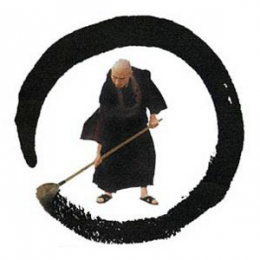






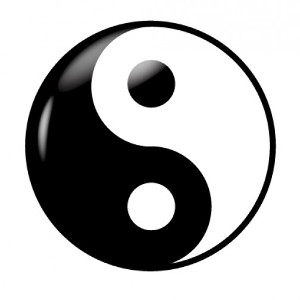 China Tai Chi Guide
China Tai Chi Guide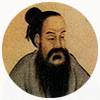 Five Elements Academy
Five Elements Academy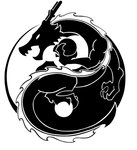 Long Tou Shan Tai Chi School
Long Tou Shan Tai Chi School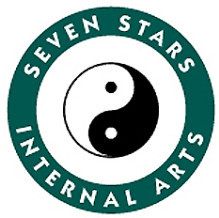 Seven Stars Internal Arts
Seven Stars Internal Arts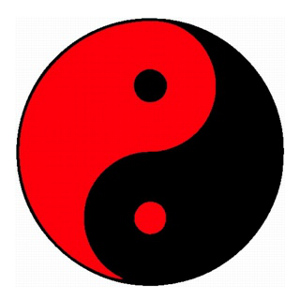 Traditional Tai Chi School
Traditional Tai Chi School Wandering Dao, China
Wandering Dao, China